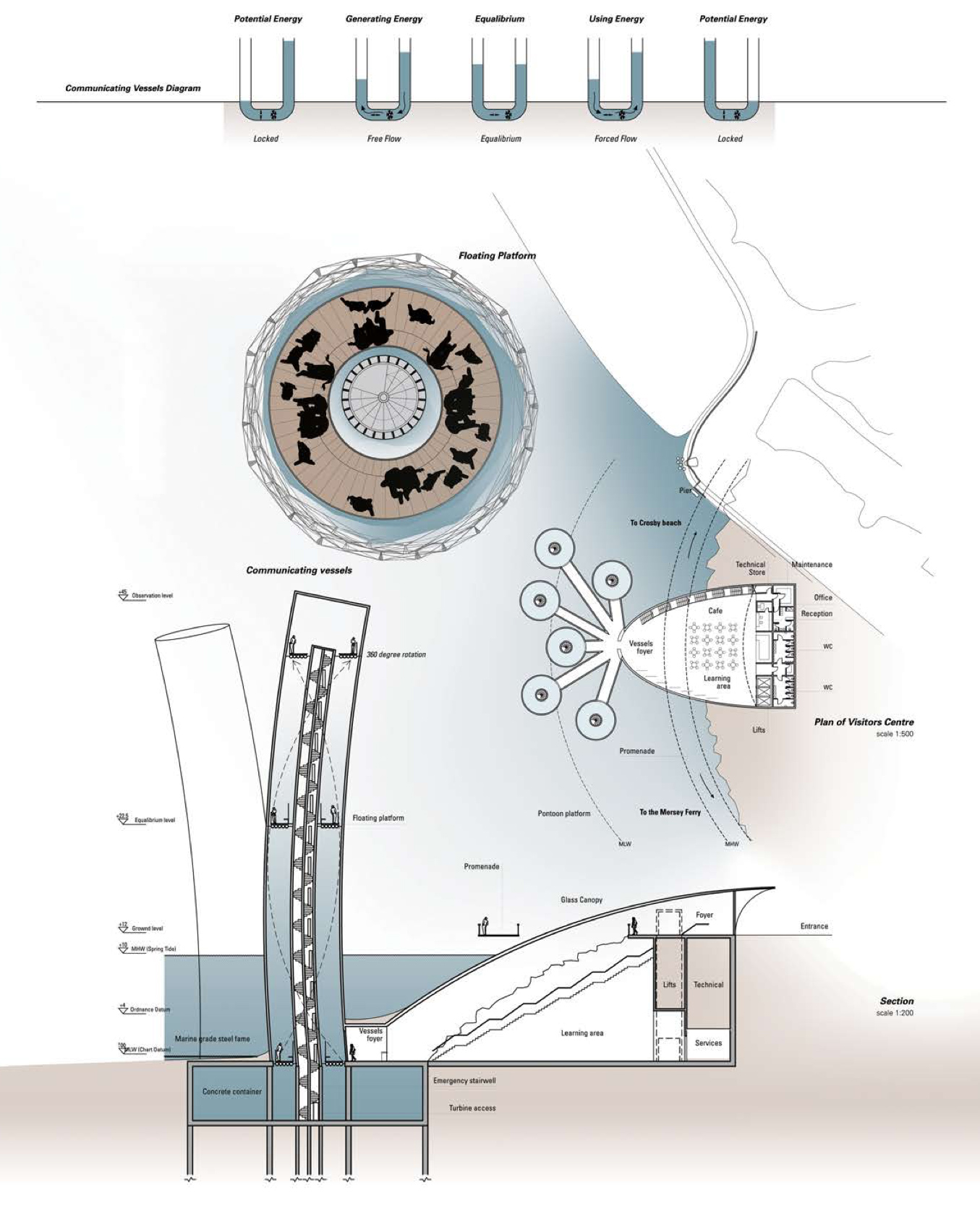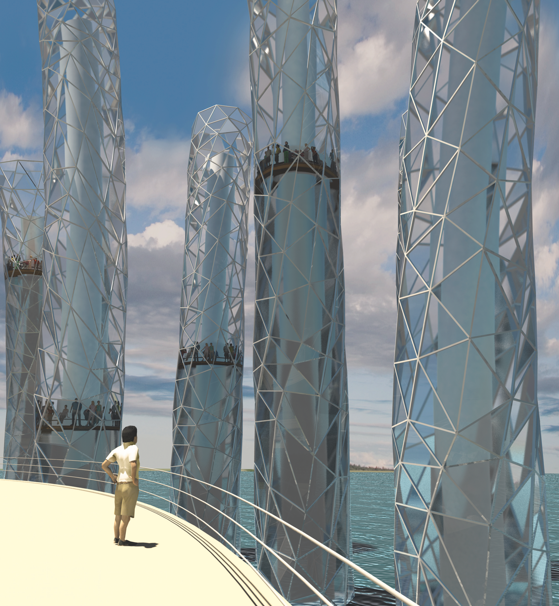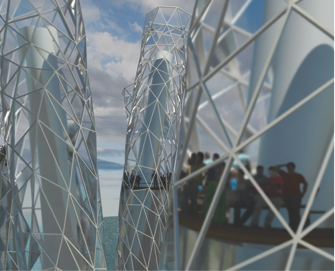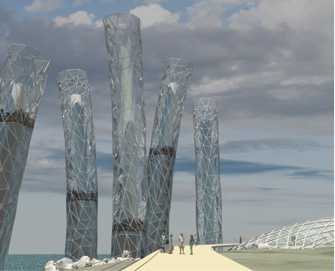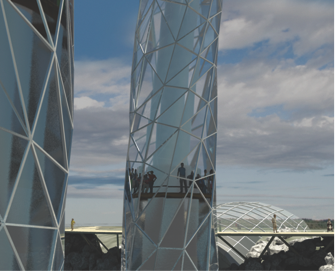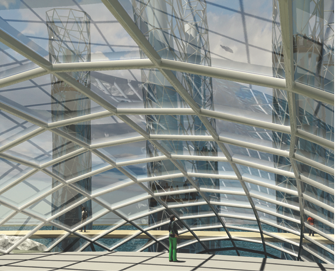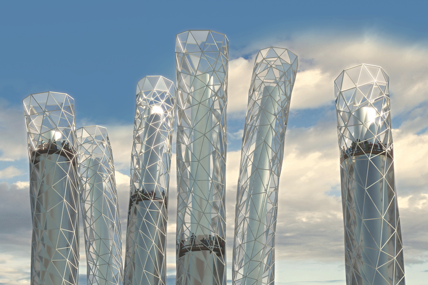WATER LIFTS
The technology of printed photovoltaic cells is based on an organic photo-reactive polymer that is applied onto flexible substrates. Beyond the capacity for generating energy from sunlight, its application on plastic sheets provides interesting mechanical properties: thin, flexible, lightweight and translucent. Due to these properties, PV Plastic can potentially develop into a unique architectural element with a distinctive aesthetic and an energetic added value.
A study of the material led to the development of a structural organization that derives directly from its unique properties. A three dimensional cellular structure would provide ideal conditions for sunlight absorption due to high surface area, particularly in view of the pane's transparency and dual sidedness. The resulting solar structural skin can become a legitimate building material capable of performing at various scales - from domestic to urban to national both on and off grid.DI cells can store energy while they are being charged.
Traditional infrastructure used for generation and distribution of energy is as environmentally harmful as it is monstrously ugly. Therefore, solar energy needs not only to be performed, but more importantly it must be witnessed and experienced in the most positive and attractive fashion. With innovative design PV plastic can provide large scale clean energy aesthetically and gracefully.
As each of the solar plastic cylinders independently collects, converts, and stores energy, the LightSponge is entirely autonomous, there is no need for cabling or any other electrical components. As the sponge structure is inherently self-supporting, only minimal foundations are necessary to anchorage it to the ground.
